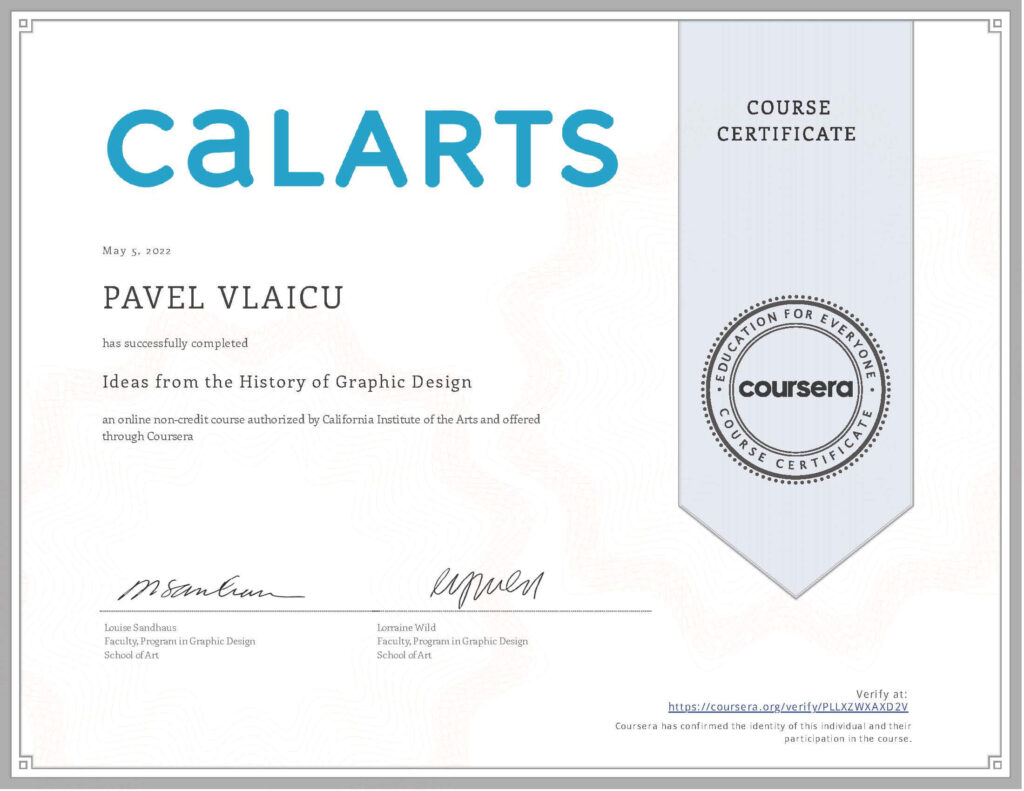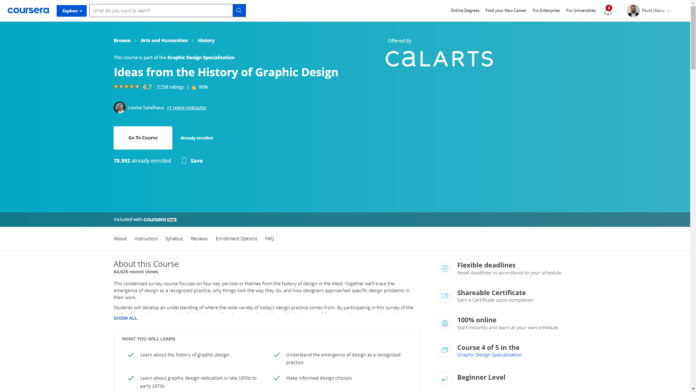About this Course
This condensed survey course focuses on four key periods or themes from the history of design in the West. Together we’ll trace the emergence of design as a recognized practice, why things look the way they do, and how designers approached specific design problems in their work.
Students will develop an understanding of where the wide variety of today’s design practice comes from. By participating in this survey of the works of innovative groups and individuals, we outline the process by which graphic design moved from a purely instrumental practice, to becoming a demanding creative and hybridized field.
Each week, a short quiz will test your knowledge of concepts, and a short reflective assignment will give you the opportunity to analyze the questions designers ask themselves today.
This is an essential course for emerging designers entering the field, or for students interested in learning more about visual culture and analysis. No previous experience is required.
A note about this course:
This course is taught from the perspective of contemporary design, to connect ideas that helped formulate design practice from the 1850s through the 1960s to the ways that designers think today. The relationship of words and pictures in graphic design is looked at through the ever-changing social and cultural contexts, technologies, aesthetics, and politics of their eras.
The definition and practice of graphic design includes all public visual communications, which is a global practice. It was the evolution of mass production and communication in the West that specifically redefined graphic design as a professional practice and is this course’s particular narrative. We hope students will consider how to connect the themes and ideas offered in this course to your own culture.
What you will learn
Learn about the history of graphic design
Understand the emergence of design as a recognized practice
Learn about graphic design radicalism in late 1950s to early 1970s
Make informed design choices
Skills you will gain
Art History
History
Graphic Arts
Graphic Design
Instructors
Louise Sandhaus
Faculty, Program in Graphic Design
School of Art
Lorraine Wild
Faculty, Program in Graphic Design
School of Art
Offered by
California Institute of the Arts
CalArts has earned an international reputation as the leading college of the visual and performing arts in the United States. Offering rigorous undergraduate and graduate degree programs through six schools—Art, Critical Studies, Dance, Film/Video, Music, and Theater—CalArts has championed creative excellence, critical reflection, and the development of new forms and expressions.
Syllabus – What you will learn from this course
Week 1
Early Mass Marketing
This week we are going to take a look at the effects of industrialization in the late 19th century, and how goods were produced, sold, and marketed.
Week 2
The Bauhaus
This week, we’ll look at how the work and teachings of The Bauhaus (1919-1933), and how design emerged as a recognized practice.
Week 3
Modernism in America
Modernism in mid-century America through the eyes of four key designers.
Week 4
Graphic Design Radicalism
Design practice in the late 1950s to early 1970s was new, radical and divergent. To show you just how varied it was, we’ll look at the work of four key players/movements.

